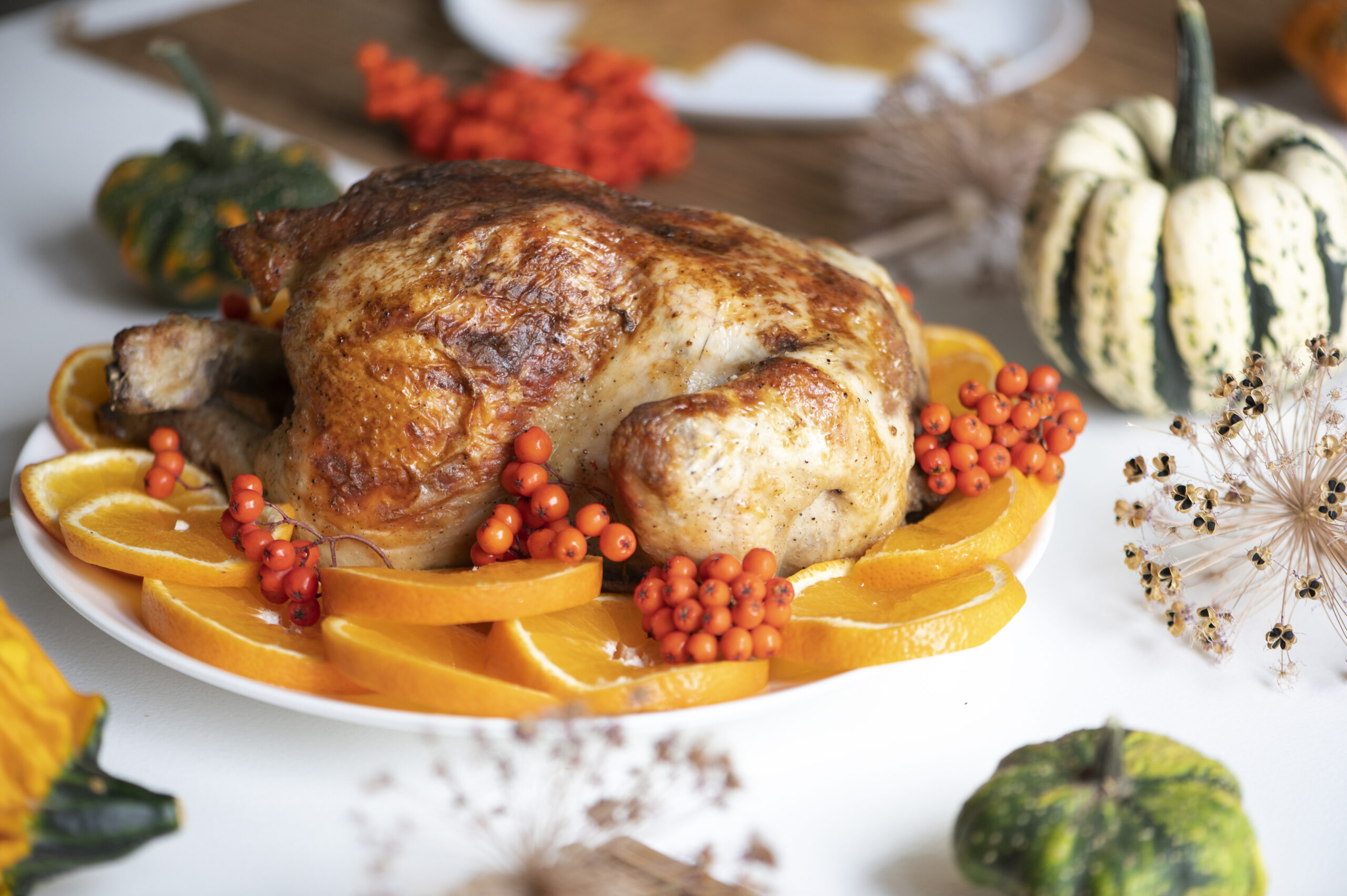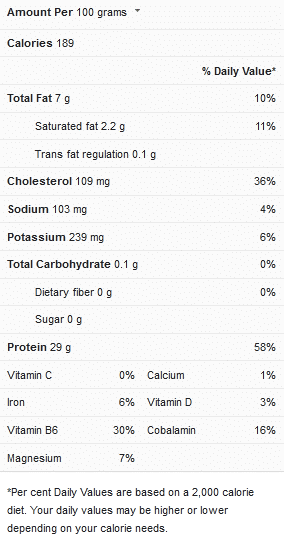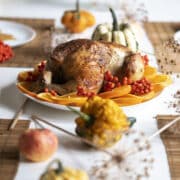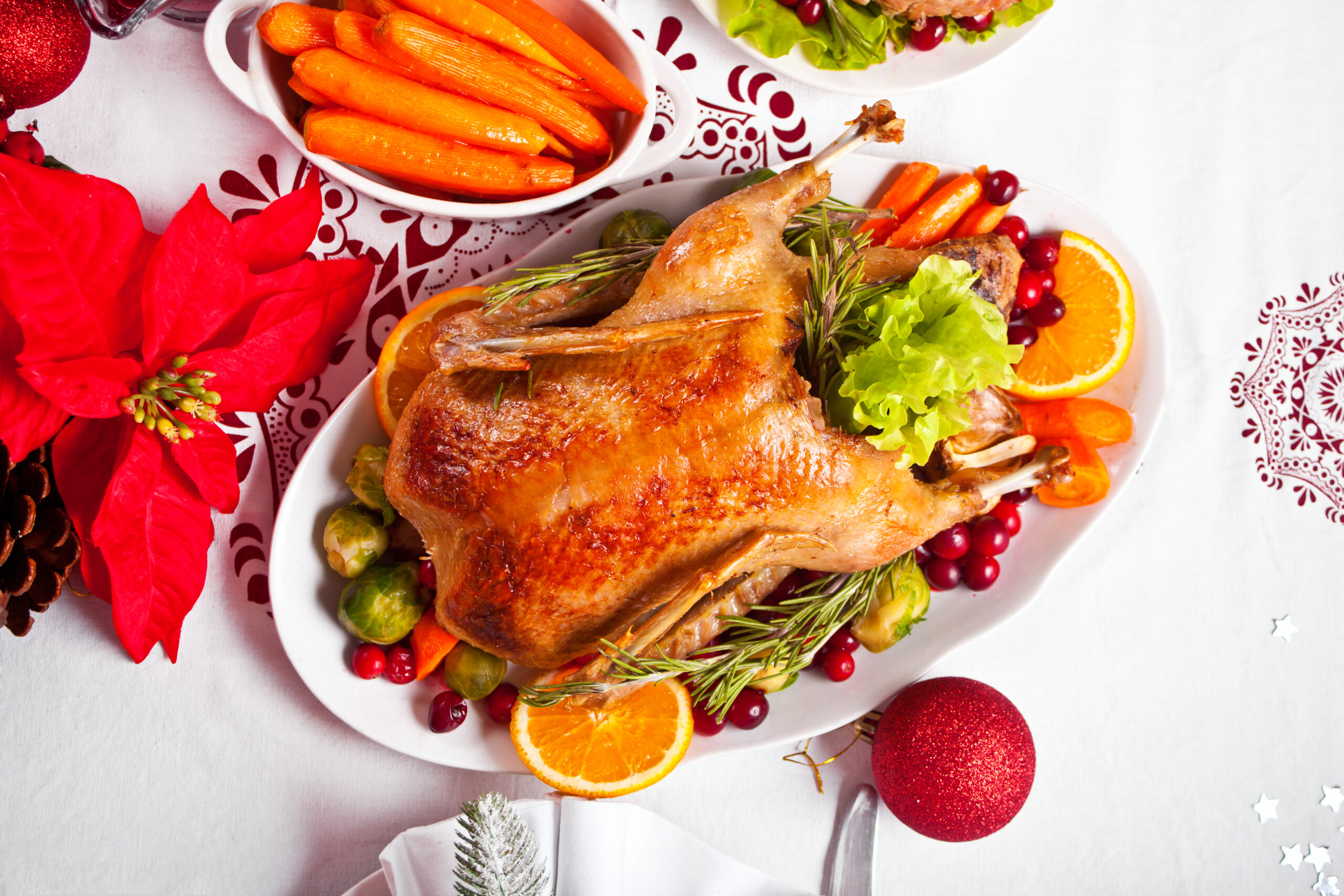Updated on November 20th, 2023
Cooking a turkey at 300F requires patience and skill, both of which aren’t difficult to acquire. The reason is at 300F, the bird slow-roasts, allowing every part to reach optimum doneness without sacrificing moisture. The result is a juicy, tender, deliciously-browned turkey that takes the attention of everyone at the dinner table. But timing is key, and here, you’ll learn how long it needs to stay in the oven.

Turkey Nutrition Facts

Preparing the Turkey
Prepping the turkey requires letting it defrost, and cleaning the insides.
Thaw
The chances are your turkey arrives frozen, meaning you’ll have to thaw it. And there’s no safer way to do it than in a fridge. You’ll need to thaw it at three to four hours per pound in the fridge, meaning an 18-pound bird will need about six hours for complete defrosting. But you can also perform a quick defrost by submerging the bird in cold water and changing it every 20 minutes.
Clean
After thawing the turkey, you’ll need to take the giblets out, and you can use them for gravy or discard it. If you’re using the turkey giblets for gravy, it helps to discard the liver, as it develops a bitter taste after cooking and can’t be mashed into the gravy. Once the giblets are removed, the turkey should be patted dry with paper towels, ready for seasoning.
Seasoning Turkey
Most turkey recipes use a combination of black pepper, salt, and fat to season turkey. Some may rub the bird all over with pepper, salt, and olive oil. But others prefer infusing butter cubes between the skin and the meat before seasoning.
The second option is best for slow-roasting turkey, as it ensures the meat turns out juicy as the cooking proceeds. And instead of dry seasoning, stock or broth is used instead, for maximum flavor and moisture. The dry ingredients are rather mixed with the stuffing materials to flavor the cavity.
Stuffing Turkey
Skip traditional stuffing for a slow-cooked turkey at 300F, but rather consider using aromatics. Options like garlic cloves, onions, shallots, leeks, and celery sticks are great for infusing flavor and aroma to the meat. Combine these with dried or fresh herbs like sage, thyme, rosemary, bay leaves, and marjoram for even better results. And don’t forget to add a rich sprinkle of salt and black pepper to the mix before stuffing.
Roasting Time and Doneness
The turkey should be done when the internal temperature reaches 160F, and this takes around 12 to 15 minutes per pound at 300F. By this measurement, it’ll take an 18-pound turkey around seven hours to reach full doneness. You’ll need a meat thermometer to confirm the internal doneness. And the probe must be stuck at the thickest part of the bird’s thighs.
View this post on Instagram
More Tips
- Separate the skin and the meat through slits made with your fingers, ensuring not to break it. This is how you get the butter in between them.
- Leave some of the seasoned stuffing vegetables to line the roasting pan.
- Line the turkey cavity with a cheesecloth before adding the vegetable stuffing. It helps keep the flavor while lending some to the inner meat.
- Truss the bird for faster cooking.
- Tent the bird with foil before roasting, to protect the skin from darkening too soon.
- Always rest your roasted turkey for at least 30 minutes before carving.
Slow-Roasted Turkey (15 Servings)
Ingredients
- One turkey, 18 pounds; thawed, giblets removed
- One pound of baby carrots
- 1½ sticks cold butter, diced
- One garlic head halved
- One quart of chicken stock
- Two cups of cream sherry
- Two large leeks, chopped
- Two large onions, chopped
- Two tablespoons of dried sage
- Two tablespoons of dried thyme
- Two bay leaves
- Three celery stalks, chopped
- Garlic powder
- Black pepper
- Salt
Instructions
- Rinse the turkey under running water and pat dry, then place it on a roasting pan. Gently run your fingers between the skin and the meat without breaking it, especially at the breast and drumstick areas.
- Slide the cubes of butter under the skin slits, and secure them on the skin with a toothpick. Then, set the bird aside for seasoning.
- Combine the chopped aromatics and vegetables with salt and pepper in a bowl. Then, line the turkey cavity with cheesecloth, enough that it’ll fall outside the cavity.
- Stuff the vegetable mixture in the chicken’s lined cavity, and spread the leftovers on the roasting pan around the bird. Then, close the cheesecloth ends by twisting them.
- Tip the bird upward, and pour the stock into the cavity, such that the runoff enters the pan. Then, truss the bird with twine, and cover it with foil.
- Prep the oven to heat to 300F, and take the racks out, leaving the one at the lower position, so there’s room for the turkey to cook.
- Put the pan in the heated oven and cook the turkey until the thickest region of the thigh reads 140F. This should take at least six hours to cook.
- Remove the foil, pour the sherry over the bird, and add garlic powder, pepper, and salt. Then, roast the bird for another 30 minutes or until the skin grows crisp and dark.
- When the bird reads 160F on the internal thermometer, take the pan out and let it sit for at least 30 minutes on a wooden carving board.
- Remove the cavity lining with the stuffing in it, and empty it into a baking dish. Keep it in a 375F oven until serving time.
More tips can be found here.

